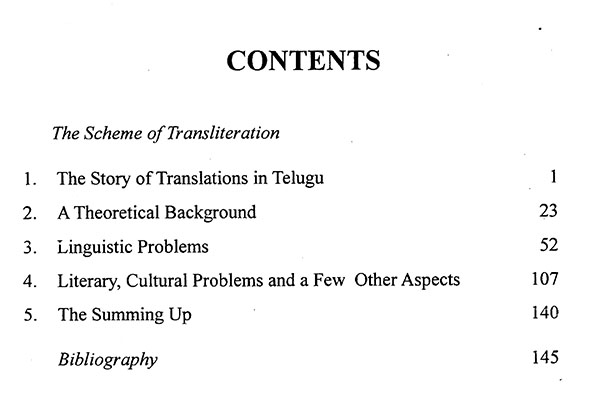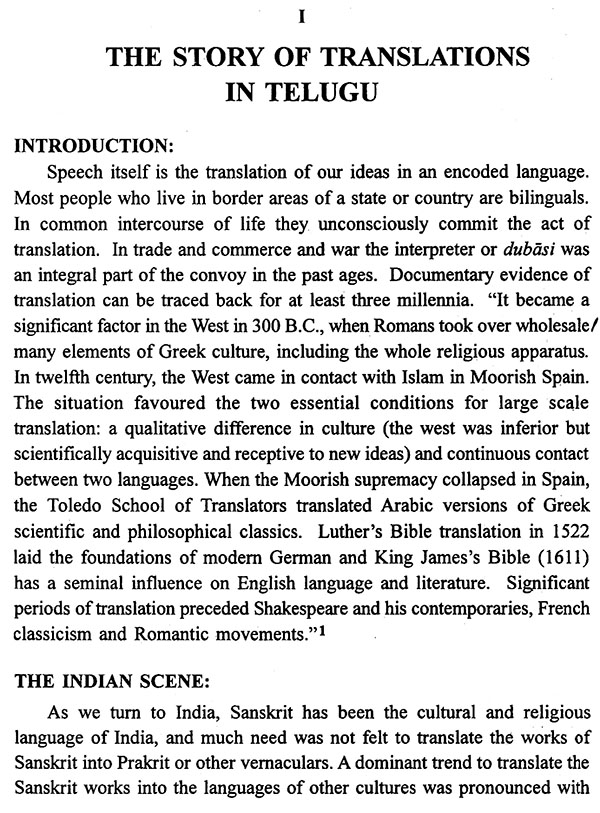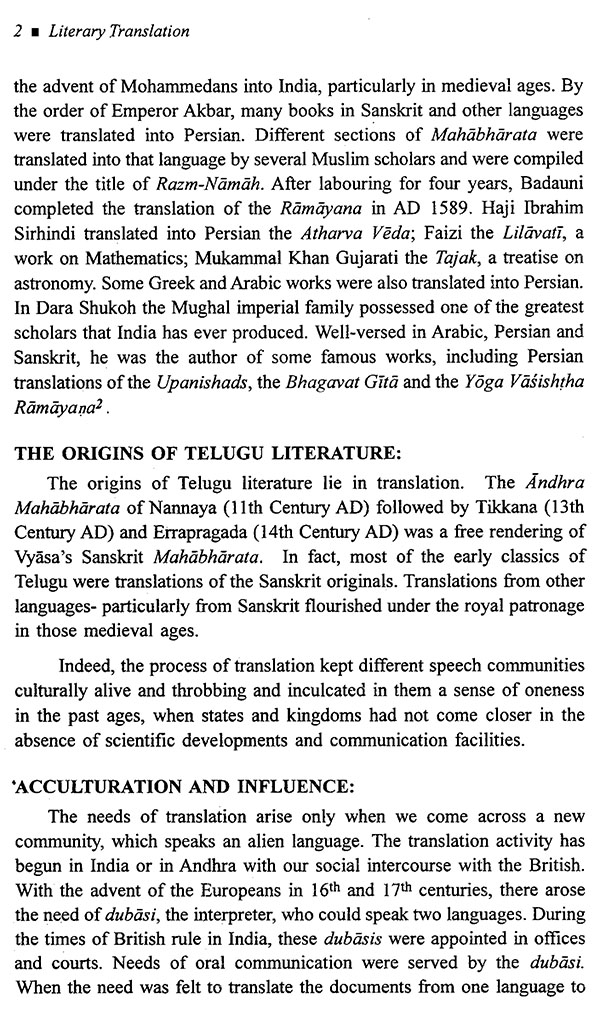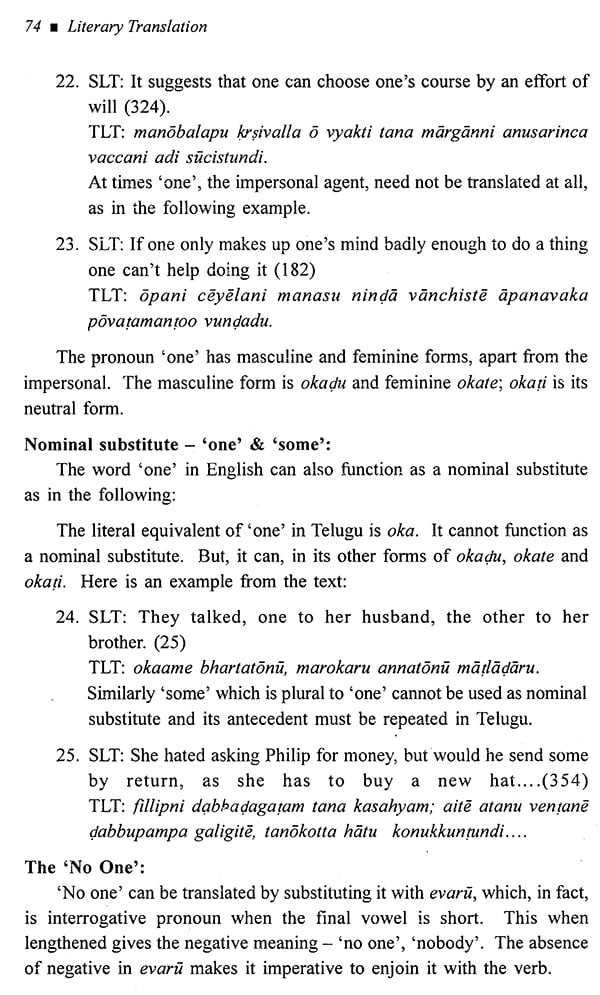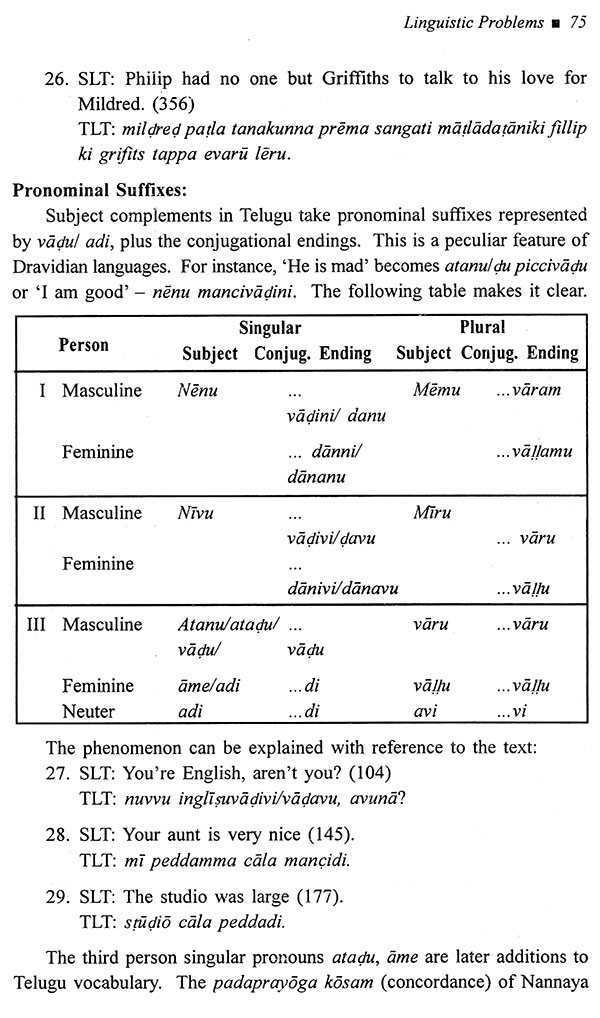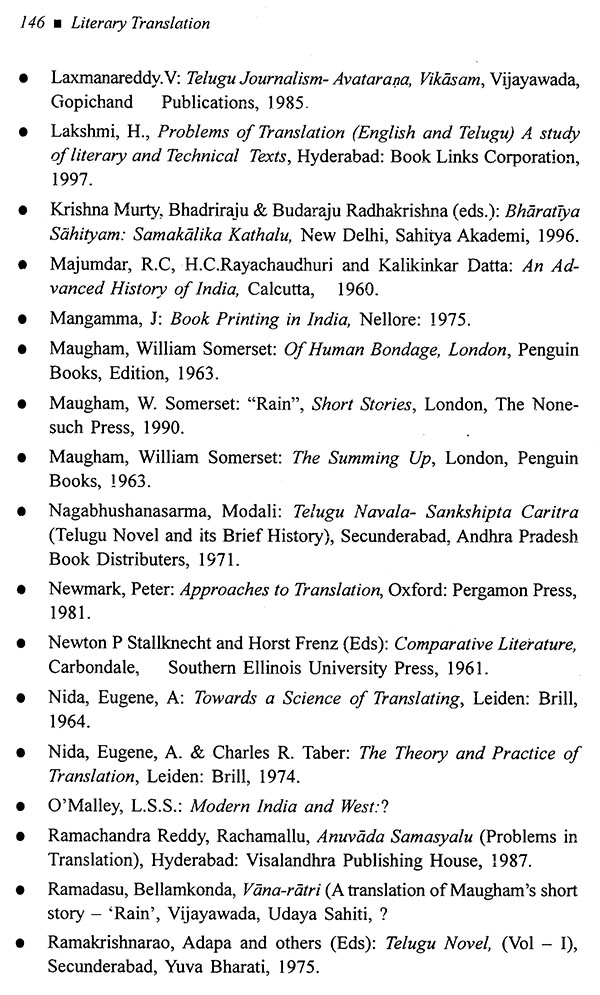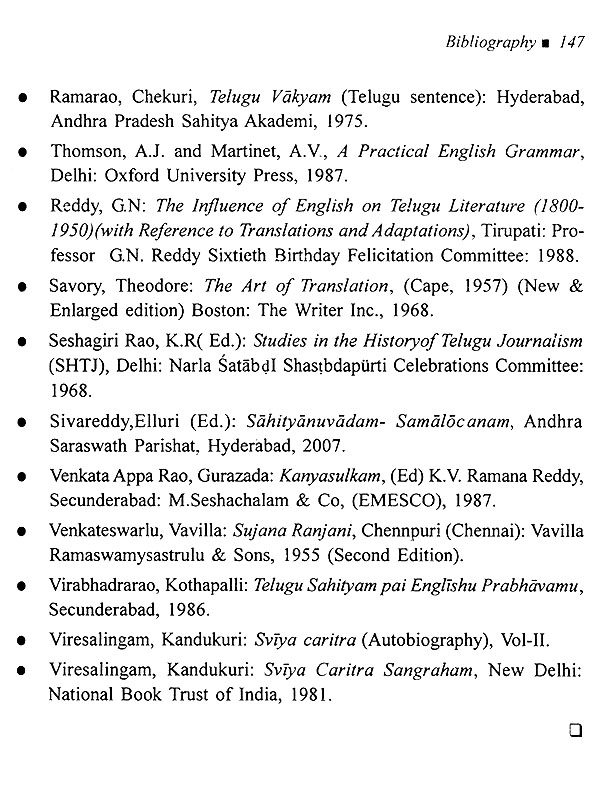
Literary Translation (With Reference to 'Of Human Bondage')
Book Specification
| Item Code: | NAX094 |
| Author: | Kakani Chakrapani |
| Publisher: | Dravidian University Campus |
| Language: | English |
| Edition: | 2008 |
| ISBN: | 9788190639132 |
| Pages: | 152 |
| Cover: | PAPERBACK |
| Other Details | 9.00 X 6.00 inch |
| Weight | 190 gm |
Book Description
Dr. Kakani is one of the best researchers who studied the problems of translation out side their theoretical limitations. As a translator of Four Classics of Telugu Fiction (Dravidian University Publication) he created a ‘bridge language’.
I don’t know when IJ had started translating from English to Telugu and vice versa, but I never thought that I would one day set to write on the mechanics of translation. Of course, there is no need that one should be conversant with the theories of translation to be a good translator. I have always had some ideas on translation. They had been vague until I have been called upon to set them to order. The occasion was when Prof. Gangisetti Lakshminarayana, the then Director of the Centre for Comparative Studies in P.S. Telugu University, offered me the research topic for Ph.D. It is of three parts— 1) A Literary Translation of Somerset Maugham’s Of Human Bondage into Telugu, 2) A Ctitical Study of the Problems of Translation and 3) The Influence of Maugham on Telugu Fiction. I could successfully complete the research programme under the gracious and generous guidance of my Supervisor, Prof. Gangisetti Lakshminarayana.
Now, the Professor, who is presently the Vice- Chancellor of the Dravidian University, Kuppam, has been very kind to offer the publication of the second part—Literary Translation (on problems encountered in translation of Maugham’s Of Human Bondage.) He has been my guide, friend and philosopher, always gracious even to the unexpected and I am grateful to him for this liberal gesture.
I have recently come into contact with the Director, Translation Bureau, Dravidian University, Kuppam, Sr! Vegunta Mohan Prasad, a well-known poet, in connection with the publication of the Four Classics of Telugu Fiction. J thank him for evincing keen interest in publication of this work.
The third part- The Influence of Maugham on Telugu Fiction— was published by Dr. G. Chakradhar, the proprietor of Media House Publications, Hyderabad in 2004, in its Telugu version under the title Sahitya Prabhavam to which Prof. Gangisetti Lakshminarayana, wrote a beautiful ‘foreword’, welcoming the work. Dr.Chakradhar is my close friend and I thank him. In all my effots Dr D.Chandrasekhar Reddy has been my constant companion and I owe thanks to him also.
When I wrote these chapters, I had requested Prof. A.Usha Devi (Department of Lexicography, P.S. Telugu University, Hyderabad) to go through them, point out my mistakes- my acts of commission and omission- and suggest improvements. She was very kind to go through them patiently. It was a laborious task, but she did not mind. Her advice and suggestions have been of immense help to me. I am very greatful to her.
I thank my daughter-in-law, Chi.la.sow. Aparna, who set the script to type, particularly a tedious enterprise, since it involved inclusion of Telugu words and sentences in English script, mended to accommodate transliteration with the diacritical marks and also my son Chi. K.Rajasekharam, who set the tables, format and other minute things. I also thank Sri G.Purushoth Kumar, who set the script to the desired page make-up. I also thank my wife Smt. K. Suvarchala, who had helped me in this enterprise with her monumental! patience.
Finally, I would feel elated if this work serves arty translator in alleviating him of the doubts or problems he/she encounters in the arduous labour of love. This work is specific on translation from English to Telugu and mostly based on my experience of problems J have faced and the way I have tried to solve them, when I have undertaken the task of translating Maugham’s Of Human Bondage’. So, I feel that my experience could be of some help to others.
Emerging out of perceptions of a few outstanding academics and administrators and sustained by the bold commitment of the Government of Andhra Pradesh to promote a spirit of integration and strong bonds of fraternity among the major Dravidian language speakers, the Dravidian University came into being in 1997. Conceived as an Inter-state institution, the neighbouring Governments of Tamil Nadu, Karnataka and Kerala have also extended a helping hand. The Tirumala Tirupati Devastahanams too came in with annual development grants.
The University which had only five Departments in 2005 has now grown and expanded into 6 Schools with 18 Departments and 5 Centres. It is now a multi-disciplinary Institution with programmes in all the traditional and modern subjects - Languages, Human & Social Sciences, Sciences, Education and Commerce & Management. Besides, it hosts the 21st Century IT Gurukulam. During the Decennial Celebrations, the University has launched two more major institutions - Rajiv Gandhi Rural Resources Development Centre for Inclusive Education (RRRDC), and Giripadam, a Center for Preservation of Endangered Dravidian Languages and Development.
D.U. is the only University which established separate Departments for all major Dravidian languages such as Telugu, Tamil, Kannada, Malayalam and Tulu with Translation Studies for the first time in the country. D.U. is also the first to start the Five-year Integrated Masters' Programmes in six disciplines.
A special division Anusrjana (Translation Bureau) aiming to involve all the professional translators all over the country for translating the Dravidian classics from one language to another is started. Prasaaraanga has brought out 50 publications in all the five languages including Tulu within a short span of two years.
Translation is a labour of love. Dr. Kakani calls it an ‘arduous’ labour of love. An inept translation results in love’s labour lost. The line drawn between precept and practice in the labour of transiation is rather very thin. That is why Dr. Kakani has come forward with a practical, honest and empirical presentation of the problems he encountered in his scholarly endeavour of translating Maugham’s masterly and classical novel Of Human Bondage. Thus his presentation stands out as a treatise on the application of theories of translation with special reference to his mother tongue, Telugu.
Dravidian University through its newly instituted Translation Bureau, Anusrjana, has in the last couple of years made many successful attempts in translating from one regional language to another as well as into English. The findings are revelatory! Though each regional language has its own genius there is a beautiful interplay of light and shade in the vocabulary and the richness of synonyms. But that is not the case with English when it 1s either a source language or a target language. It makes absolute synonymy impossible. All Indian languages share a culture. So they yield much easier to inter-translatability. The lexical and semantic problems are fewer among them than from or into English.
Dr. Kakani Chakrapani, I am happy to say, is one of the best researchers I could come across, who has studied the problems of translation both theoretically as also in application to a particular text and context, as he took up translation of Maugham’s Of Human Bondage, only to study the problems outside their theoretical limitations. Incidentally he also made efforts to study the influence of Maugham on the modern Telugu novelists while dealing with not the so called ‘intertextual’ but the intercultural aspects of life in fiction and fiction in life — which one might see as ‘modified reality’. In other words, this can be viewed freshly as a movement from ‘influence’ to ‘confluence’. You get ‘influenced’ when you look at things from the outside. You get ‘received’ when you view from the inside.
The value of this book lies in its specificity. While not neglecting or ignoring theorists like Catford or Nida or Newmark, Dr. Kakani’s emphasis is on ‘communicative translation’ giving it a status of both art and craft. As any sound research scholar on translation should, he too dwelt upon linguistic, literary and cultural problems. He took enough care of orthography, lexis and syntax. He has applied the four universal semantic categories — object, event, abstract and relation to Telugu too. He analysed the teasing problems of the grammatical categories like nouns, pronouns, verbs, adjectives, adverbs, prepositions and conjunctions. This is what makes this book ‘specific’ and ‘applied’. The other vexing problems are the English Tenses, word order (SVO — SOV — OSV — VOS etc) voice etc.
Here is one dependable handbook for all prospective translators (Telugu- English; English-Telugu) which ultimately urges them not to conceive translation simply as a mimetic activity but to take it up as an elective affinity. Every good translator creates a ‘bridge language’.
